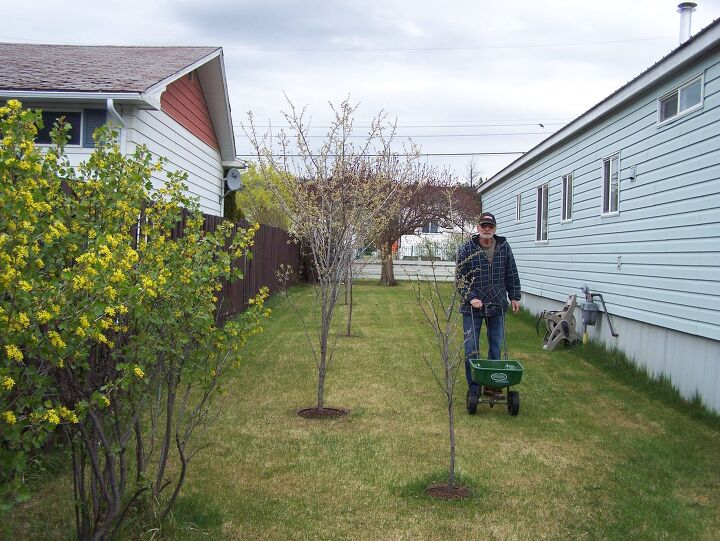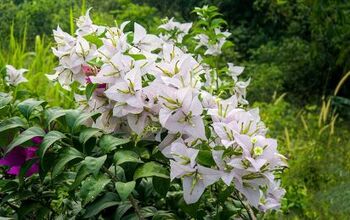How Long For Fertilizer To Turn Grass Green?

You try and try to keep your yard looking healthy, yet you still seem to have brown patches and a faded look. Don’t worry; the grass isn’t always greener on the other side. You can get the lush lawn you dream about by using fertilizer. But how long before fertilizer turns grass green?
Synthetic fertilizers deliver results within several days but often need more frequent applications. Organic fertilizers tend to take between two and six weeks to show results. However, organic fertilizers offer a slower release of nutrients that keeps working for a much longer time. Therefore, you won’t have to apply organic options as often as synthetic ones.
Of course, there are many different brands and types of fertilizers on the market. Therefore, read the labels carefully when making your choice at the garden store. Ultimately, the fertilizer you choose and how you apply it will determine how green your grass grows.
Will Fertilizer Turn Grass Green?
Whether you choose to use synthetic fertilizer or go the organic lawn care route, fertilizer plays a large role in turning grass green. Many experts think of fertilization as one of the most essential aspects of lawn care.
Fertilizers contain various nutrients, vital to the health and quality of your grass. The three numbers on the fertilizer label represent the N-P-K ratio. This ratio is the amount of nitrogen (N), phosphorus (P), and potassium (K), respectively.
Nitrogen is responsible for encouraging growth and giving your grass that lush, green color that turns your neighbors green with envy. Therefore, as long as you apply fertilizer appropriately, it should lead to a greener lawn.
How Long Does It Take Fertilizer To Work?
The amount of time it takes for your fertilizer to turn your grass green depends on the type of fertilizer you use. For example, are you using synthetic or organic fertilizer? How much nitrogen is in the fertilizer? The product’s label should give you a rough estimate of how long you can expect to wait for results.
However, in general, synthetic fertilizers will deliver results more quickly than organic ones. The faster timeline is because synthetic options contain ready-to-go nutrients that don’t require any decomposition.
Therefore, your lawn gets the nutrients right away, giving you a greener lawn in roughly two to five days. Many synthetic fertilizers contain higher amounts of nitrogen than potassium and phosphorus, which also contributes to a faster green.
The trade-off for faster results is more frequent applications. Typically, you must apply synthetic fertilizer more often since the nutrients don’t persist as long as with organic fertilizers.
Organic fertilizers contain nutrients that need to decompose first and provide a slow release into the soil. Therefore, with organic fertilizers, you won’t see results until about two to six weeks, maybe even longer.
However, the results will endure for a longer period, and you won’t need to apply fertilizer as often. In a nutshell, organic fertilizers tend to improve the quality and richness of your lawn in the long term. But if your lawn needs a quick green boost for that upcoming family barbecue, synthetic fertilizers will do the trick.
Why Isn’t My Grass Green After Fertilizing?
If you fertilize your lawn and your grass still isn’t green, there could be a few reasons. First, perhaps you simply didn’t wait long enough. Remember, if you use organic fertilizers, you may need to wait several weeks to see results.
Another potential issue is the fertilizer you used did not have enough nitrogen. Different fertilizers contain different NPK ratios.
Make sure to research your area, soil, and the fertilizers you use to determine the best option for your lawn. Also, your lawn likely has different nitrogen needs between the spring and fall. Therefore, you might find you need to use different fertilizers at different points throughout the seasons.
Fertilize Your Lawn At The Right Time
It’s essential to ensure you’re applying enough fertilizer and doing so at the correct times throughout the year. The suggested times to fertilize your lawn are early and late spring and early and late fall. Depending on where you live, you might need to fertilize your lawn more often, especially if using synthetic varieties.
Apply fertilizer when it’s cool, as doing so on hot sunny days could lead to lawn burn. Spreading fertilizer evenly on cool evenings is ideal. It’s also important to plan your fertilizer application around the right weather conditions.
Don’t Forget To Water Your Lawn
No matter what type of fertilizer you use, it’s best to do so before a light rainfall or when you have the time to water your lawn afterward. It’s also helpful to lightly water your lawn a couple of days before applying the fertilizer. This step ensures your lawn won’t be too dry, and the soil will more readily accept the fertilizer.
However, too much water is detrimental. If the forecast calls for heavy rain, don’t fertilize your lawn. A heavy rainfall within 24 hours of applying fertilizer can wash away the product, negating your efforts.
Know The Best Grass To Use
If you’re confident you’re fertilizing your lawn correctly, and it’s still not green, consider the grass. Are you using the best type of grass for your climate? There are several kinds of grass, and some are better suited for specific climates, so know your grass growing zones.
For example, St. Augustine, centipede, and Bermuda grasses are ideal for warmer climates. Additionally, Bermuda and centipede grass will hold up during the winter months in warmer climates.
Alternatively, bluegrass, ryegrass, and bentgrass work better in cooler climates. If you live in an area that experiences a lot of drought, tall fescue grass does well. Also, know how to best care for your lawn, including fertilization schedules and how often to water your grass.
Where The Green Grass Grows
Everyone wants to have the house on the block with the enviable green lawn. But green grass doesn’t just happen. Using fertilizer on your grass is an essential component of getting a rich, green, healthy lawn.
As long as you’re applying it correctly, you can expect synthetic fertilizers to turn your grass green within two to five days. Organic fertilizers need to break down and release more slowly into the soil. Therefore, you’ll see results between two and six weeks, but they’ll tend to last longer.
Either type of fertilizer is a viable option. It all depends on what your specific needs are and how fast you want results. Make sure to know your grass, consider your options, then get ready to enjoy a greener lawn.
Related Guides:

Stacy Randall is a wife, mother, and freelance writer from NOLA that has always had a love for DIY projects, home organization, and making spaces beautiful. Together with her husband, she has been spending the last several years lovingly renovating her grandparent's former home, making it their own and learning a lot about life along the way.
More by Stacy Randall



























